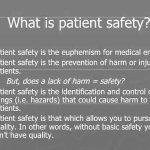Quality Use of Medicines: Meaning, Principles, Pillars, Benefits

What is the quality use of medicines?
Quality use of medicines or QUM refers to a comprehensive approach to ensure that medications are used effectively, safely, and appropriately by patients. It encompasses the appropriate selection of medications, their correct administration, and the responsible use of medicines by healthcare professionals and patients alike. The concept of quality use of medicines aims to achieve optimal therapeutic outcomes while minimizing potential risks and adverse effects.
Key principles of quality use of medicines include:
1. Appropriate Medication Selection: Healthcare professionals should carefully consider the patient’s individual needs and medical condition when choosing a medication. The selected medicine should be evidence-based, effective, and suitable for the specific health condition.
2. Correct Dosage and Administration: The prescribed dosage should be appropriate for the patient’s age, weight, and health status. Proper administration instructions should be given to patients to ensure they take their medications correctly.
3. Monitoring and Evaluation: Healthcare professionals should closely monitor the patient’s response to medications and assess their effectiveness and safety regularly. Adjustments may be made if necessary to optimize treatment outcomes.
4. Patient Education: Encouraging patients to actively participate in their healthcare and medication management is crucial. Providing adequate information about their medications, including potential side effects and how to manage them, improves adherence and reduces medication-related problems.
5. Minimizing Adverse Effects and Interactions: Healthcare professionals should be vigilant in identifying potential interactions between different medications and minimizing the risk of adverse effects.
6. Avoiding Overuse and Misuse: Ensuring that medications are not overused or misused helps prevent unnecessary harm and contributes to the responsible use of resources in the healthcare system.
7. Multidisciplinary Collaboration: Effective communication and collaboration between healthcare professionals, including doctors, pharmacists, nurses, and other relevant healthcare providers, are essential to achieve quality use of medicines.
By promoting quality use of medicines, healthcare systems aim to enhance patient outcomes, improve medication adherence, reduce healthcare costs associated with medication-related problems, and overall, provide better and safer patient care.
What are the 4 pillars of quality use of medicines?
The 4 pillars of quality use of medicines are a framework established by the World Health Organization (WHO) to guide and promote the appropriate and responsible use of medications. These pillars serve as essential principles for healthcare systems and professionals to ensure optimal therapeutic outcomes and patient safety. The four pillars are:
1. Selection: This pillar focuses on choosing the right medicine for the individual patient’s specific health condition. Healthcare professionals should consider evidence-based guidelines, the patient’s medical history, allergies, and other relevant factors when deciding which medication is most appropriate.
2. Procurement: The procurement pillar emphasizes the importance of ensuring the availability of safe, effective, and quality medications. Healthcare systems and institutions should prioritize the procurement of medications from reliable and reputable sources to guarantee the integrity and efficacy of the drugs being used.
3. Use: This pillar revolves around the proper and responsible use of medicines. Healthcare professionals should ensure that patients receive accurate information about their medications, including dosages, administration instructions, potential side effects, and how to manage them. Patient education and adherence support play a crucial role in this aspect.
4. Monitoring: Monitoring is the ongoing process of assessing the patient’s response to medications and identifying any potential adverse effects or drug interactions. Healthcare professionals should regularly review the patient’s progress and make adjustments to the treatment plan as necessary to achieve the best therapeutic outcomes while minimizing risks.
By adhering to these four pillars, healthcare systems and professionals can work together to promote quality use of medicines, resulting in improved patient outcomes and a more efficient and safer healthcare environment.
What are the 10 reasons for poor quality of medicines?
The poor quality of medicines can arise from various factors, both intentional and unintentional, that compromise the safety, efficacy, and reliability of medications. Some of the key reasons for the poor quality of medicines include:
1. Substandard Manufacturing: Medications may be produced using substandard manufacturing practices, leading to variations in drug potency, contamination, or inadequate quality control. Substandard manufacturing can occur in both developed and developing countries, affecting medicines produced domestically and imported from other regions.
2. Counterfeit Medicines: Counterfeit medicines are intentionally and fraudulently mislabeled to imitate genuine products. They may contain incorrect active ingredients, inadequate or excessive dosages, or harmful substances. Counterfeit drugs can pose serious health risks as they lack the expected therapeutic effect and may cause adverse reactions.
3. Lack of Regulatory Oversight: In some regions, weak or insufficient regulatory frameworks can result in inadequate monitoring and enforcement of quality standards for medicines. The absence of strict regulatory oversight allows substandard and counterfeit drugs to enter the market and circulate undetected.
4. Supply Chain Issues: During distribution and transportation, medicines can be exposed to improper storage conditions, temperature fluctuations, or other environmental factors that may affect their quality. If not properly managed, the supply chain can compromise the integrity of medicines.
5. Inadequate Testing and Quality Control: Some manufacturers may bypass rigorous testing procedures or quality control measures to cut costs and expedite production. Insufficient testing can lead to the release of medicines with compromised quality.
6. Inaccurate or Outdated Formulations: Errors in the formulation or preparation of medications can lead to inconsistencies in dosages or the use of outdated or ineffective ingredients, rendering the medicines less effective or unsafe.
7. Lack of Awareness and Education: Healthcare professionals and patients may not always be adequately informed about the risks associated with poor-quality medicines, making it challenging to identify and report such instances.
8. Globalization and Illicit Trade: The globalization of the pharmaceutical market has increased the complexity of drug supply chains, making it easier for poor-quality medicines to infiltrate legitimate distribution channels. Illicit trade and unauthorized online pharmacies are also sources of counterfeit and substandard medicines.
9. Economic Factors: Economic pressures and cost-cutting measures in the pharmaceutical industry may lead to compromises in quality to maintain profitability.
To address the issue of poor-quality medicines, it is essential to implement and strengthen regulatory systems, promote global cooperation, raise awareness among healthcare professionals and patients, and encourage reporting and vigilance regarding suspected cases of substandard or counterfeit medicines.
Importance and Benefits of Quality Use of Medicines
The importance and benefits of quality use of medicines are significant for both patients and healthcare systems. When medications are used appropriately and responsibly, the following advantages can be observed:
1. Improved Patient Outcomes: Quality use of medicines ensures that patients receive the right medications for their specific health conditions, leading to better treatment outcomes. Properly selected and administered medicines are more likely to be effective in managing illnesses and improving patients’ health.
2. Enhanced Patient Safety: By focusing on the correct dosages, appropriate administration, and monitoring for adverse effects, the risk of medication errors and adverse drug reactions is minimized. This enhances patient safety and reduces the potential harm associated with medication use.
3. Optimal Resource Utilization: The responsible use of medicines can help prevent unnecessary healthcare costs related to medication-related problems, such as hospitalizations due to adverse drug reactions or treatment failures. It promotes the efficient use of healthcare resources.
4. Increased Medication Adherence: Patient education and involvement in their treatment decisions promote better medication adherence. When patients understand their medications, potential side effects, and benefits, they are more likely to adhere to their treatment plans, leading to improved health outcomes.
5. Reduction in Antimicrobial Resistance: Quality use of antibiotics and antimicrobial agents helps combat the emergence of drug-resistant bacteria. Proper usage, including adherence to prescribed courses, helps prevent the development of resistant strains and preserves the effectiveness of these essential medications.
6. Public Health Impact: Ensuring that medications are of high quality and used responsibly contributes to better overall public health. It aids in controlling the spread of infectious diseases, managing chronic conditions, and reducing the burden on healthcare systems.
7. Increased Trust in Healthcare: When patients and healthcare professionals have confidence in the medicines being prescribed and used, it fosters trust in the healthcare system. This trust is essential for effective doctor-patient relationships and overall patient satisfaction.
8. Rational Drug Use: Quality use of medicines promotes rational drug use, which means using the most appropriate medicine at the right dose, for the correct duration, and at the lowest cost. This principle helps optimize patient outcomes while minimizing unnecessary drug use.
9. Regulatory Compliance: Emphasizing quality use of medicines encourages compliance with stringent regulatory standards, leading to safer and more effective medications entering the market.
10. Improved Quality of Life: When patients receive the right medications and achieve better health outcomes, their overall quality of life improves. They can better manage their health conditions, remain productive, and enjoy a higher quality of life.
In conclusion, quality use of medicines is crucial for improving patient health, enhancing safety, and optimizing healthcare resources. By focusing on appropriate medication selection, proper administration, monitoring, and patient education, healthcare systems can reap these significant benefits and promote better health outcomes for individuals and communities.





